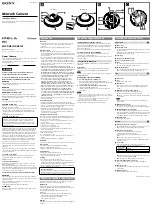
259
[PE2] interface ethernet 1/2
[PE2-Ethernet1/2] pim bsr-boundary
[PE2-Ethernet1/2] quit
# Establish an MSDP peering relationship.
[PE2] msdp
[PE2-msdp] encap-data-enable
[PE2-msdp] peer 1.1.1.3 connect-interface loopback 1
# Configure a static route.
[PE2] ip route-static 1.1.1.3 32 ethernet 1/2 192.168.1.2
# Configure BGP.
[PE2] bgp 100
[PE2-bgp] import-route ospf 1
[PE2-bgp] group pe2-pe1 internal
[PE2-bgp] peer pe2-pe1 route-policy map2 export
[PE2-bgp] peer pe2-pe1 label-route-capability
[PE2-bgp] peer pe2-pe1 connect-interface loopback 1
[PE2-bgp] peer 1.1.1.1 group pe2-pe1
[PE2-bgp] group pe2-pe3 external
[PE2-bgp] peer pe2-pe3 as-number 200
[PE2-bgp] peer pe2-pe3 route-policy map1 export
[PE2-bgp] peer pe2-pe3 label-route-capability
[PE2-bgp] peer pe2-pe3 connect-interface loopback 1
[PE2-bgp] peer 1.1.1.3 group pe2-pe3
[PE2–bgp] quit
# Configure OSPF.
[PE2] ospf 1
[PE2-ospf-1] area 0.0.0.0
[PE2-ospf-1-area-0.0.0.0] network 1.1.1.2 0.0.0.0
[PE2-ospf-1-area-0.0.0.0] network 11.11.11.11 0.0.0.0
[PE2-ospf-1-area-0.0.0.0] network 10.10.0.0 0.0.255.255
[PE2-ospf-1-area-0.0.0.0] quit
[PE2-ospf-1] quit
# Configure a routing policy.
[PE2] route-policy map1 permit node 10
[PE2-route-policy] apply mpls-label
[PE2-route-policy] quit
[PE2] route-policy map2 permit node 10
[PE2-route-policy] if-match mpls-label
[PE2-route-policy] apply mpls-label
[PE2-route-policy] quit
3.
Configure PE 3:
# Configure a Router ID, enable IP multicast routing on the public network, configure an MPLS LSR
ID, and enable the LDP capability.
<PE3> system-view
[PE3] router id 1.1.1.3
[PE3] multicast routing-enable
[PE3] mpls lsr-id 1.1.1.3
















































